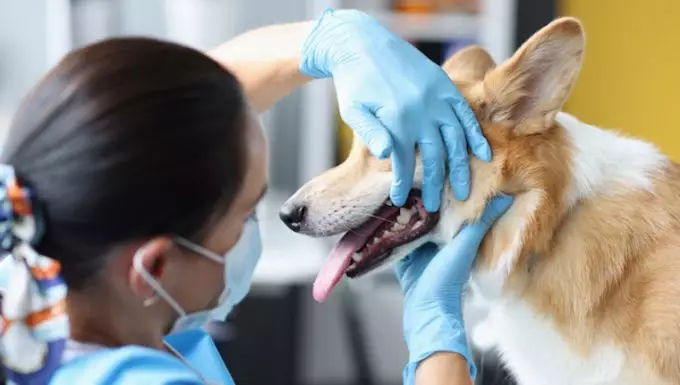Gingiva squamous cell carcinoma (GSCC) represents a serious health concern within veterinary oncology, marking itself as the most frequently diagnosed form of oral cancer in canines. With its aggressive nature and potential for metastasis, an understanding of this condition is vital for dog owners. Awareness can play a crucial role in early detection, which significantly improves the prognosis and quality of life for affected dogs.
Recognizing the early signs of gingiva squamous cell carcinoma is essential. The symptoms can be quite varied, leading to a broad differential diagnosis, which can sometimes delay treatment. Common indicators include excessive drooling, significant weight loss, persistent bad breath, and difficulties in eating, especially hard or dry food. Other notable symptoms may include the presence of blood around the mouth, loose teeth, and swelling of the jaw. Growths in the oral cavity can signal the need for immediate veterinary attention, as these can lead to more severe complications if left untreated.
Despite these symptoms being alarming, it is crucial to remember that they can arise from various oral health issues, not solely GSCC. This underscores the necessity for thorough examination and diagnostics by a qualified veterinarian.
The precise etiology of gingiva squamous cell carcinoma remains largely idiopathic—meaning that, in most cases, the direct cause is unknown. However, several factors have emerged as potential contributors to the development of this malignancy. Environmental influences, including chemical exposure from pesticides or household cleaners, could play a role in the disease’s onset. Additionally, radiation exposure, whether from medical treatment or environmental sources, has also been implicated.
Moreover, certain dog breeds display a higher predisposition to GSCC, including but not limited to Beagles, Bull Terriers, Dalmatians, Basset Hounds, Poodles, Schnauzers, and Kerry Blue Terriers. This breed-specific susceptibility emphasizes the importance of genetic research in understanding and potentially preventing GSCC in vulnerable populations.
When presented with a dog displaying concerning symptoms, a veterinarian will typically initiate a multifaceted approach to diagnosis. This begins with a comprehensive consultation focused on the observed symptoms and the dog’s medical history, considering inherited breed issues. Following this, a detailed physical examination is conducted, with particular attention paid to the oral cavity to identify any abnormal growths or changes.
To confirm a diagnosis of gingiva squamous cell carcinoma, more invasive procedures might be necessary, including blood tests, urine analyses, and ultimately, a biopsy of suspicious growths. The outcomes of these tests will guide the veterinarian in formulating an appropriate treatment plan.
The treatment landscape for gingiva squamous cell carcinoma is contingent upon the stage and severity of the disease. For smaller, localized tumors, cryosurgery is often a viable initial treatment option, where the tumor is frozen and removed. Larger, more invasive tumors may necessitate surgical intervention that could involve partial jaw removal.
For advanced cases, a multimodal approach incorporating chemotherapy and radiation therapy is commonly adopted to achieve the best outcome. Additionally, photodynamic therapy represents a novel strategy utilizing lasers to selectively target and inhibit tumor growth, offering a less invasive option for certain patients.
During the recovery phase, creating a supportive environment at home is pivotal. Owners should ensure their pets have access to a calm setting, potentially necessitating a dietary adjustment to softer foods that facilitate easier ingestion. Close collaboration with a veterinarian will enable pet owners to devise a nutritional plan that meets their furry companion’s needs.
As pet owners, the emotional toll of witnessing a beloved dog struggle with a health condition like gingiva squamous cell carcinoma can be immense. However, proactive engagement with veterinary professionals can markedly improve outcomes. By staying alert to symptoms, fostering an open dialogue with veterinarians, and exploring viable treatment options, dog owners can champion their pets’ journey through this challenging diagnosis, ensuring they receive both the care and comfort they deserve.

